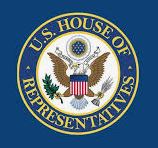
Amendment Sixteen to the Constitution was ratified on February 3, 1913. It grants Congress the authority to issue an income tax without having to determine it based on population. The official text is written as such:
The Congress shall have power to lay and collect taxes on incomes, from whatever source derived, without apportionment among the several States, and without regard to any census or enumeration.
In the Constitution’s original writing, the Taxing Clause in Article I grants Congress the general authority to “lay and collect Taxes, Duties, Imports, and Excises.” For “direct” taxes, Article I commands that they must be collected based on the population of the states. Before an income tax was established, the majority of funds given to the federal government derived from tariffs on domestic and international goods. The short-lived Revenue Act of 1861 predated the Sixteenth Amendment as the first official federal income tax, but it was eventually repealed in 1872. The end of the 19th century saw the beginning of the Progressive Era, a time period in which political and social reform centered on industry, voting, immigration, and several other topical issues of the time period. Levying a federal income tax became a key goal for many progressive groups, the key argument being that it was fairer for wealthy individuals to pay for the taxes and tariffs that had been largely obliged from the middle class and the poor in society. Congress passed the 1894 Wilson-Gorman Tariff Act, which contained an income tax provision of 2% on incomes of over $4,000 (equivalent to $135,951.63 in 2022 U.S. Dollars). Supporters of this new income tax argued that it was not specifically a “direct” tax, which would require it to be apportioned among the states. Two previous Supreme Court decisions supported this theses, but the 5-4 decision in 1895’s Pollock v. Farmers’ Loan & Trust Co. ruled that the income tax in the Act was a “direct” tax. The core argument was that the income tax in the Act was sourced from deriving income from an individual’s property. Based on this, the Court asserted that “direct” taxes included any sort of income tax on rents, dividends, and interest, therefore making them legally required to be apportioned among the states. Read More



















Recent Comments